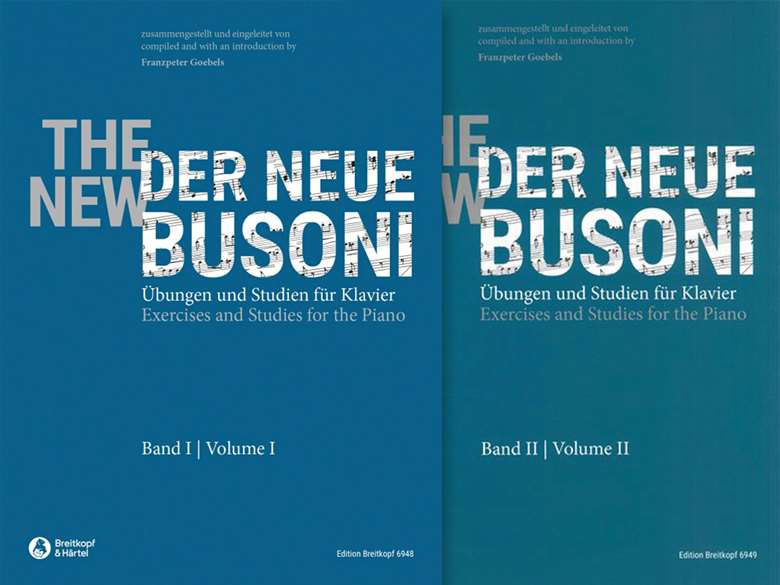The New Busoni: Exercises and Studies for the Piano, Volumes 1 and 2 (Edition Breitkopf)
Murray McLachlan
Friday, March 8, 2024
There is a wonderful holistic unity, an organic authenticity about the way the exercises are presented

Though Busoni’s multifaceted achievements still remain underappreciated, his longstanding publishers Breitkopf are marking the 100th anniversary of his death by rebranding and relaunching a significant number of his key works and transcriptions.
During the last seven years of his life, alongside work on Doktor Faust, Busoni produced his Klavierübung, a monumental collection of technical exercises, studies and transcriptions in 10 volumes. It is a remarkable testament from one of the greatest of all pianists, with individual volumes devoted to scales, chords, three-hand technique, staccato, studies based on Cramer, variations derived from Chopin, polyphonic technique and studies after Paganini-Liszt. Pianistic elegance, expansive layout and lateral thinking permeate the entire anthology. There is a wonderful holistic unity, an organic authenticity about the way the exercises are presented. Particular aspects of technique are explored in initial exercises that become progressively more sophisticated. Though it would be impossible for a student to work exhaustively through every single page of the Klavierübung, the connections and juxtapositions of its contrasted material are revelatory and illuminating.
This two-volume selection was initially made by Franzpeter Goebels for the centenary of Busoni’s birth in 1966. Here we have the same material freshly offered in elegant new covers. Volume 1 presents a representative selection of exercises while Volume 2 presents studies based on music from Bach, Beethoven, Chopin, Cramer and Mozart. It is impossible to do justice to the extent of the riches on offer in what amounts to nearly 200 pages, but special mention should be made of the way Busoni is able to connect famous excerpts from Bach with later developments in pianism. The results are often full of wit and charm as well as pedagogical interest. I adore the manner in which Preludes from Book 1 of Bach’s Well-Tempered Clavier are transformed into studies for double sixths, leaps, trills and extended arpeggios. Similar treatment is provided for Beethoven’s sonatas as well as for the Emperor Concerto. Many of these musical puzzles, gestures and bravura bagatelles remain unrecorded; perhaps this reissue will stimulate interest beyond the practice studio.
The 10-volume set has been out of print for decades, but Goebels’s selections give a representative flavour of the whole. Special emphasis is made on lateral movement, with ‘thumbing under’ to change position largely ignored in the series of exercises until Chopin is explored. Busoni clearly cultivated staccato and non-legato articulation as an essential means of increased facility and coordination. In this respect he is in opposition to the ‘physical legato’ approach that was emphasised in the latter part of the 20th century. Happily, Busoni’s ideals sit much more comfortably with 21st-century trends: many highly regarded pianists today show how legato can be achieved without always adopting literal overlaps between notes, and they will appreciate Busoni’s forward-looking intentions. In sum, this is a vitally important issue that is more likely to be understood and used in 2024 than it was a century ago. Bravo Breitkopf.
This article originally appeared in the Spring 2024 issue of International Piano. Never miss an issue – subscribe today







